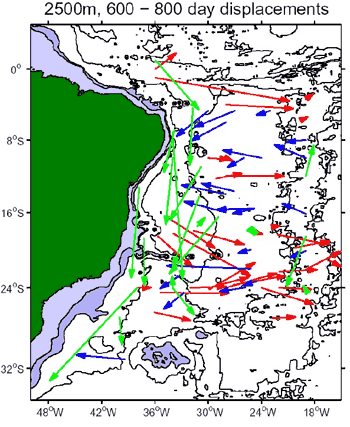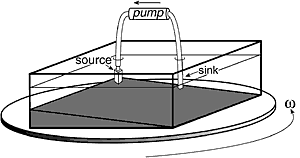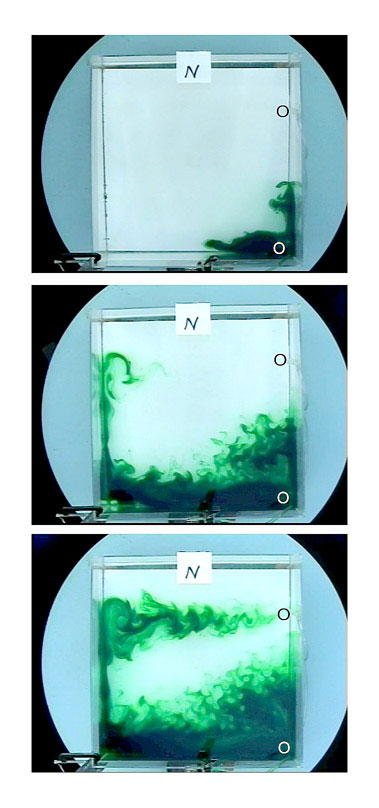Introduction | Tank – How to | Tank – Examples | Wiki
The mid-depth flow in the ocean appears to show a marked tendency for zonal jets of small meridional scale which connect to the western boundary currents, as shown in Fig.1. The lateral extent of these jets and their geographical and vertical structure are still largely unknown. However, the predominantly zonal interior is consistent with the idea that there is little mixing and upwelling and so no stretching of Taylor Columns which therefore move zonally to conserve their length if not interrupted by topography.
Fig.1 Net float displacements over periods near 600-800d at a depth of 2.5km, showing the movement of North Atlantic Deep Water in the south Atlantic. Eastward displacements are marked in red, westward in blue and southward in green. Courtesy of Nelson Hogg.
The preference for zonal currents connecting to western, as opposed to eastern, boundary currents, can be studied in our rotating tank by setting up a source/sink flow using a pump, in the presence of a topographic slope to represent spherical effects, as sketched in Fig.2. The pump gently draws fluid out of the tank (to create a sink) and pumps it back in through a diffuser (the source). Dyes can be used to trace the path of the fluid on its way from the source to the sink. Experiments with different arrangements of source and sink are readily carried out, as described here
Fig.2. Source sink experiment for the study of abyssal ocean circulation
One example is shown in Fig.3. Fluid is sucked out toward the northern end of the eastern boundary (marked by the black circle) and pumped in on the southern end of the eastern boundary (marked by the white circle). Rather than flow due north along the eastern boundary, fluid tracks west, runs north along the western boundary and then turns eastwards at the `latitude’ of the sink. And all because eastern boundary currents are disallowed!
Fig.3 Three photographs charting the evolution of dye from source (white circle) to sink (black circle). The shallow end of the tank is marked with the ÔNÕ and represents polar latitudes.
This experiment was developed in collaboration with undergraduates Priyam Patel and Rick Nelson and Professor David Holland at NYU.


